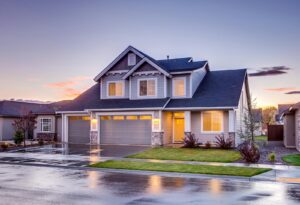
Key Takeaways
- The importance of merging functionality and design.
- Understanding the role of sustainability in modern home design.
- Innovative design trends shaping the future of residential spaces.
Balancing Functionality and Aesthetic Appeal
Creating a home that seamlessly blends beauty and utility is a fine art requiring a thoughtful design approach. It’s about designing environments in which each component has a function and contributes to the overall beauty. This approach ensures that homes are functionally efficient and visually captivating. Rockford Homes exemplifies this balance, making houses that serve practical needs and the desire for beautiful living spaces. This dual focus aligns with contemporary living needs, where homes must accommodate various activities like work, leisure, and entertainment without compromising style or comfort.
With the rise of multifunctional living spaces, it’s crucial to incorporate design elements that cater to diverse needs. Think of a living room that doubles as a home office or a kitchen that transforms into a dining area. Minimalist design principles help streamline complex spaces by focusing on simplicity and functionality. They reduce clutter and enhance the overall appeal of a room, creating a serene and orderly environment that complements modern lifestyles.
The Role of Sustainability in Home Design
The increasing awareness of environmental issues has shifted sustainability to the forefront of residential design. Homeowners are choosing sustainable materials and energy-saving systems that lessen carbon footprints and promote healthier indoor spaces. These sustainable choices, from bamboo flooring to solar panels, reflect a commitment to preserving our planet for future generations. Beyond environmental benefits, sustainable design often results in financial savings through reduced utility bills, proving that eco-friendly options are both responsible and economical.
Incorporating sustainability into home design doesn’t stop at materials or energy usage; it also involves creating adaptable and resilient spaces to changing conditions. It considers the durability of materials, their effects on indoor air quality, and the home’s overall energy efficiency. Such considerations ensure the living environment remains comfortable and functional while aligning with broader climate goals.
Innovative Trends in Residential Design
The realm of residential design is thriving with creativity, fueled by new trends that enhance aesthetics and functionality. Open floor plans, for instance, have become a hallmark of modern homes. By removing walls, these designs promote interaction and allow for flexible use of space. This openness makes homes feel more prominent and improves natural lighting and airflow, enhancing livability. Technological advancements have introduced smart home systems that revolutionize daily living. These systems offer unparalleled convenience, enabling homeowners to control lighting, temperature, and security from their smartphones. Integrating such technology creates comfortable and efficient homes, elevating the everyday living experience and setting new standards for what we expect from our residential spaces.
Maximizing Space in Smaller Homes
As urban areas continue to grow, many people find themselves adapting to smaller living spaces. Maximizing every available space is essential to make these compact homes functional and welcoming. Clever space-saving ideas such as wall-mounted shelves, hidden storage compartments, and multi-purpose furniture can transform cramped areas into efficient living zones. The key to maximizing space is a strategic design considering storage and movement. Effectively using vertical space, opting for foldable and extendable furniture, and selecting decor that doesn’t overwhelm a room are all techniques that can enhance the usability of smaller homes. These strategies ensure that living in a smaller space doesn’t equate to sacrificing comfort or style.
Personalizing Your Living Space
A home is ultimately a reflection of its inhabitants’ personalities and tastes. Personalization can be achieved through chosen color schemes, textures, and decor items that resonate with the individual. While personalization adds character to a home, it is essential to avoid overcrowding spaces with too many personal touches, which leads to visual clutter and chaos. Effective personalization involves striking a balance between uniqueness and cohesion. Incorporating elements like a vibrant accent wall or curated art pieces can make a statement without overwhelming the senses. Homeowners can create distinct and harmonious spaces by thoughtfully weaving personal elements into the design.
The Impact of Technology on Home Design
The integration of technology in home design has transformed not only the construction process but also how we interact with our homes. Virtual reality allows homeowners and designers to visualize and adjust design plans in real time before committing to physical changes, reducing waste and costs associated with modifications. Modern homes increasingly feature integrated smart systems that elevate functionality and convenience. Technology improves efficiency and provides reassurance, from automated lighting and climate controls to security systems that can be accessed remotely. This intersection of home design and technology marks a significant shift in how we experience and manage our living environments.
Effective Use of Natural Light and Ventilation
Natural light and proper ventilation are essential to a healthy and inviting home. Well-positioned windows and skylights can dramatically improve interior lighting, reducing the need for artificial sources and enhancing a space’s mood. Light-reflective surfaces and bright, airy color palettes can further amplify this effect.
Ventilation is essential for ensuring indoor air quality and comfort. Options such as cross-ventilation through strategically placed windows and vents can keep a home cool and well-aerated. These factors enhance the physical health of the occupants while also benefiting energy usage, adhering to the tenets of sustainable living.
Final Thoughts on Designing Your Ideal Home
Designing a home is a multifaceted journey that involves balancing aesthetics, functionality, and sustainability. By prioritizing these elements, homeowners can create a living space that is practical, visually appealing, and enriching. Whether building from the ground up or refurbishing an existing structure, a thoughtful approach will ensure that your home meets your needs and enhances your quality of life. Ultimately, designing a home is about creating an environment that feels uniquely yours while respecting the broader context of our shared world.
